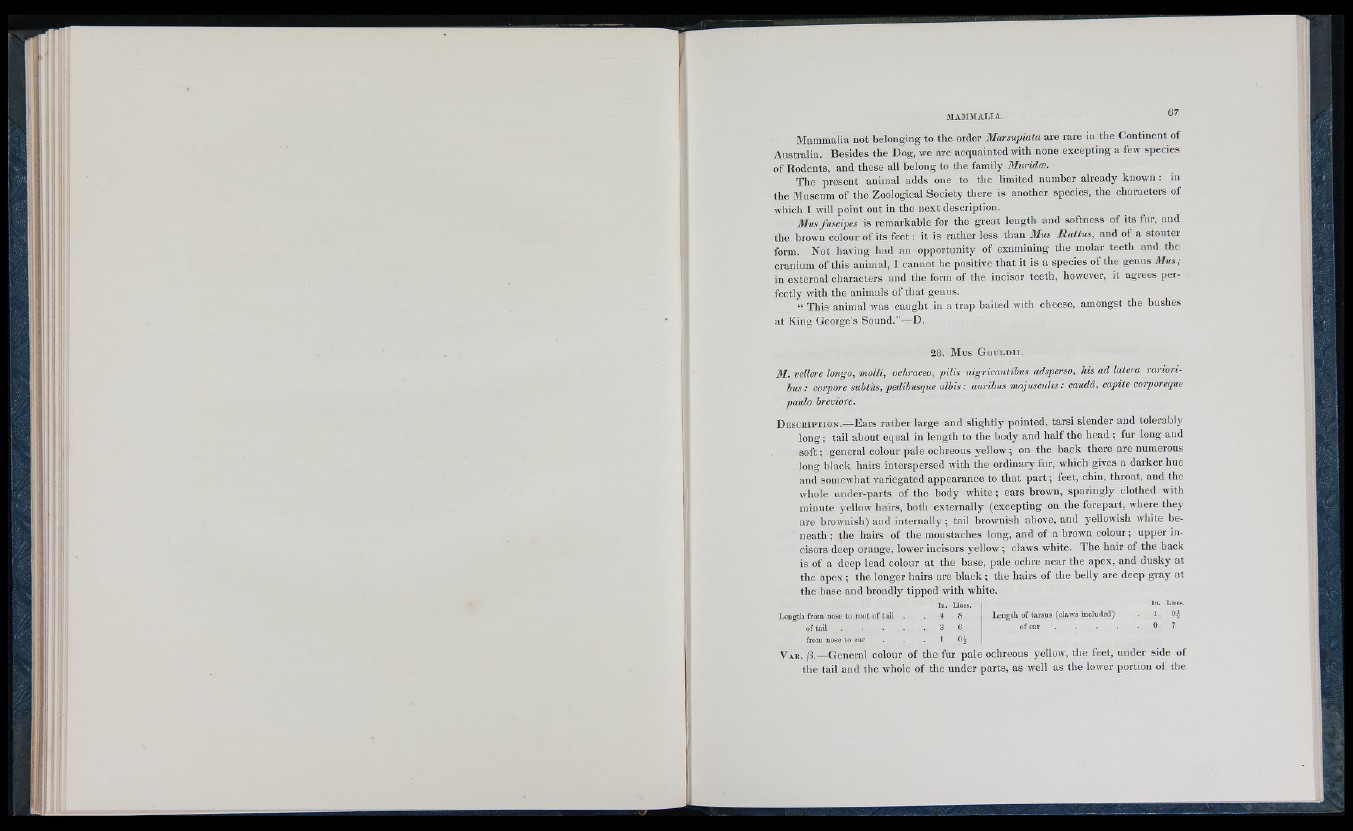
Mammalia not belonging to the order Marsupiata are rare m the Continent of
Australia. Besides the Dog, we are acquainted with none excepting a few species
of Rodents, and these all belong to the family Muridoe.
The present animal adds one to tlie limited number already known : in
the Museum of the Zoological Society there is another species, the characters of
which I will point out in the next description.
Mus fuscipes is remarkable for the great length and softness of its fur, and
the brown colour of its feet : it is rather less than 3Ius Rattus, and of a stouter
form. Not having had an opportunity of examining the molar teetli and the
cranium of this animal, I cannot he positive that it is a species of the genus 3Ins;
in external characters and the form of the incisor teeth, however, it agrees per-
fectly with the animals of that genus.
“ This animal was caught in a trap baited with cheese, amongst the bushes
at King George’s Sound.”—D.
2 8 . M u s G o u l d i i .
31. vellere longo, molU, ochraceo, pilis nigricantibus adsperso, his ad latera rarioribus:
corpore subtus, pedibusque albis: aurihus inajusculis: caudâ, capite corporeque
paulo breviore.
D e s c r i p t i o n .—Ears rather large and slightly pointed, tarsi slender and tolerably
long ; tail about equal in length to the body and half the head ; fur long and
soft ; general colour pale ochreous yellow ; on the back there are numerous
long black hairs interspersed with the ordinary fur, which gives a darker hue
and somewhat variegated appearance to that part; feet, chin, throat, and the
whole under-parts of the body white ; ears brown, sparingly clothed with
minute yellow hairs, both externally (excepting on the forepart, where they
are brownish) and internally ; tail brownish above, and yellowish white beneath
; the hairs of the moustaches long, and of a brown colour; upper incisors
deep orange, lower incisors yellow ; claws white. The hair of the back
is of a deep lead colour at the base, pale ochre near the apex, and dusky at
the apex ; the longer hairs are black ; the hairs of the belly are deep gray at
the base and broadly tipped with white.
In. Lines. Length of tarsus (claws included) 1 Oi
of ear .
Length from nose to root of tail . . 4 8
of tail . . . . . 3 6
from nose to car . . . 1 OJ
Var. j3.—General colour of the fur pale ochreous yellow, the feet, under side oi
the tail and the whole of the under parts, as well as the lower portion of the